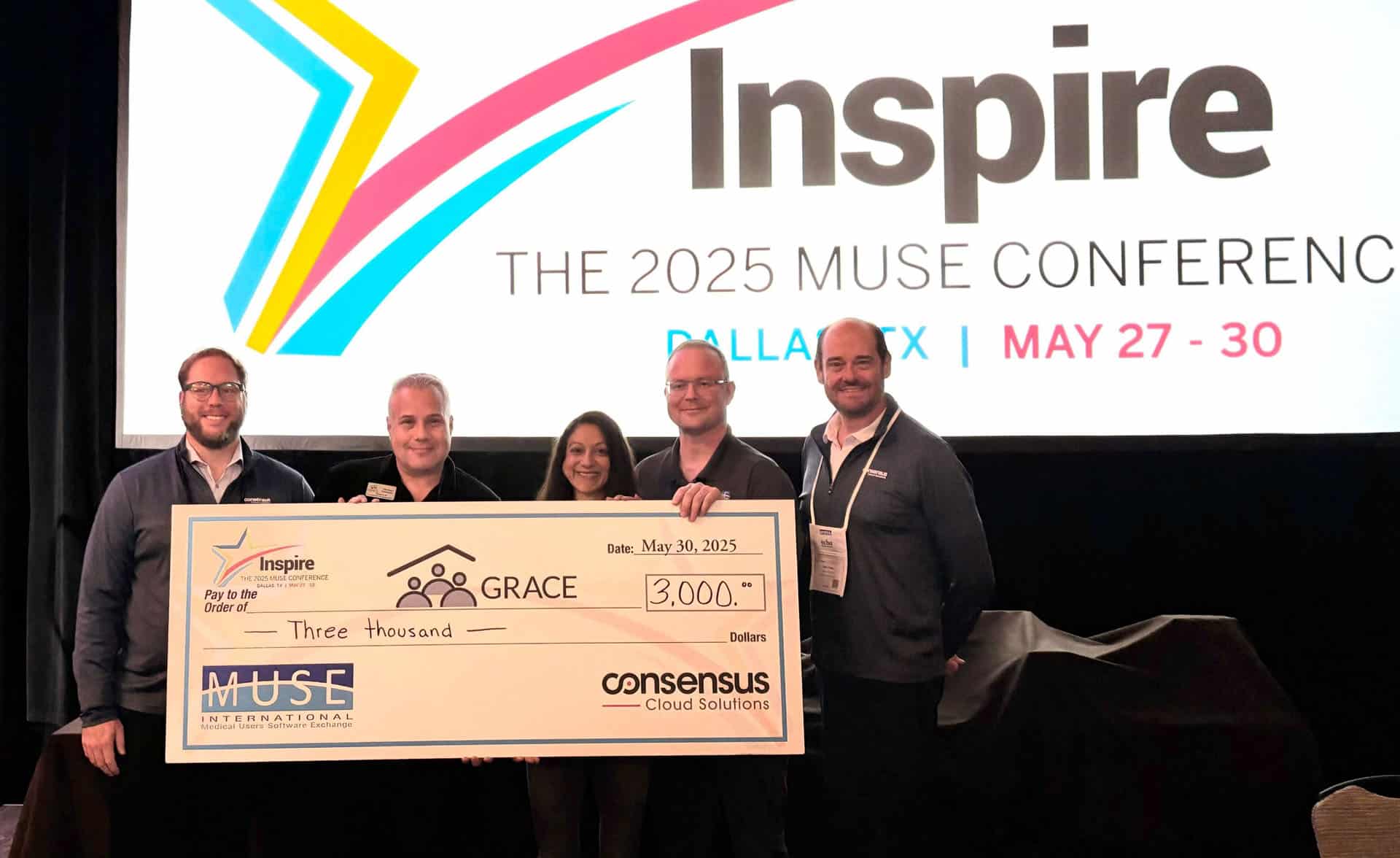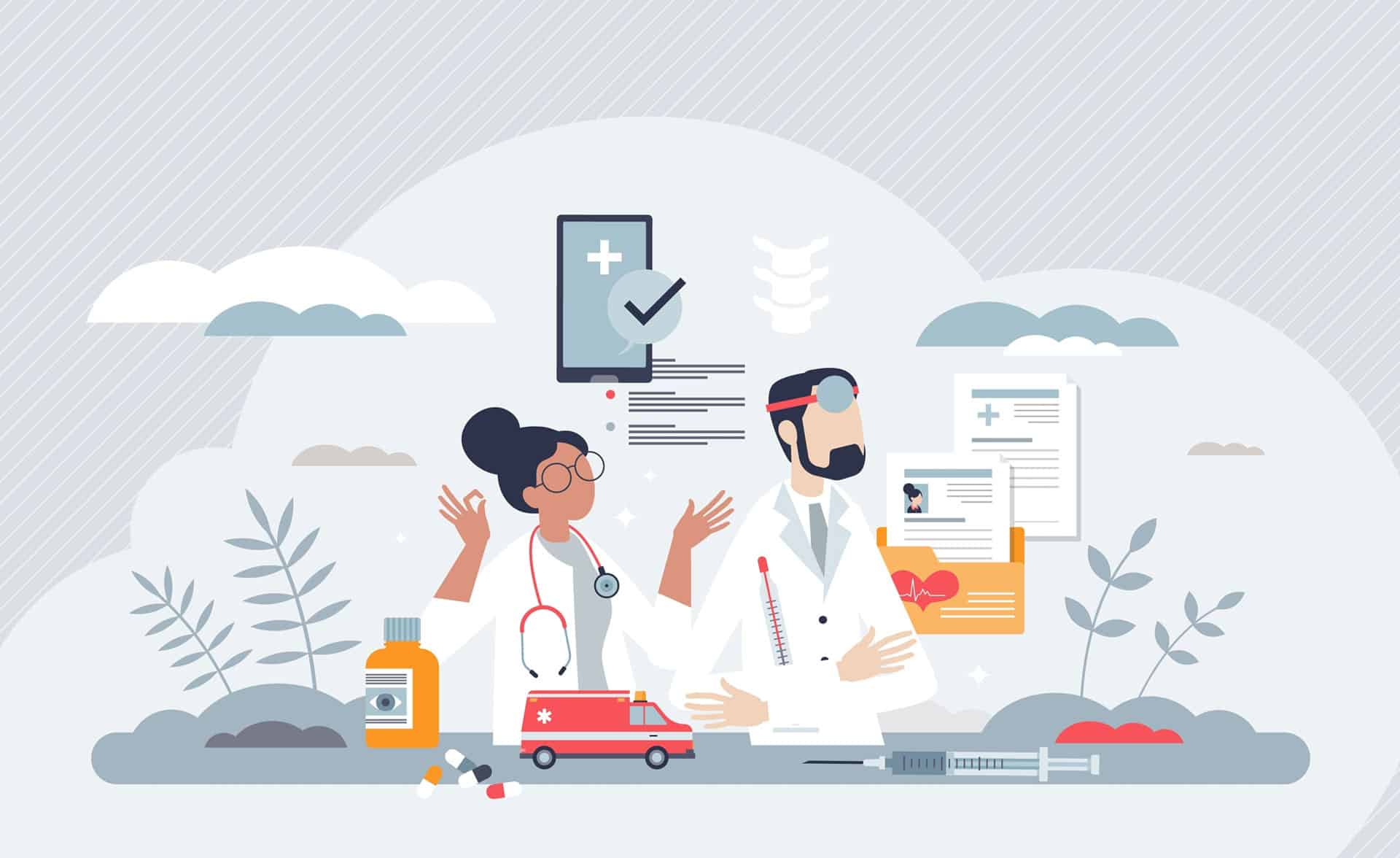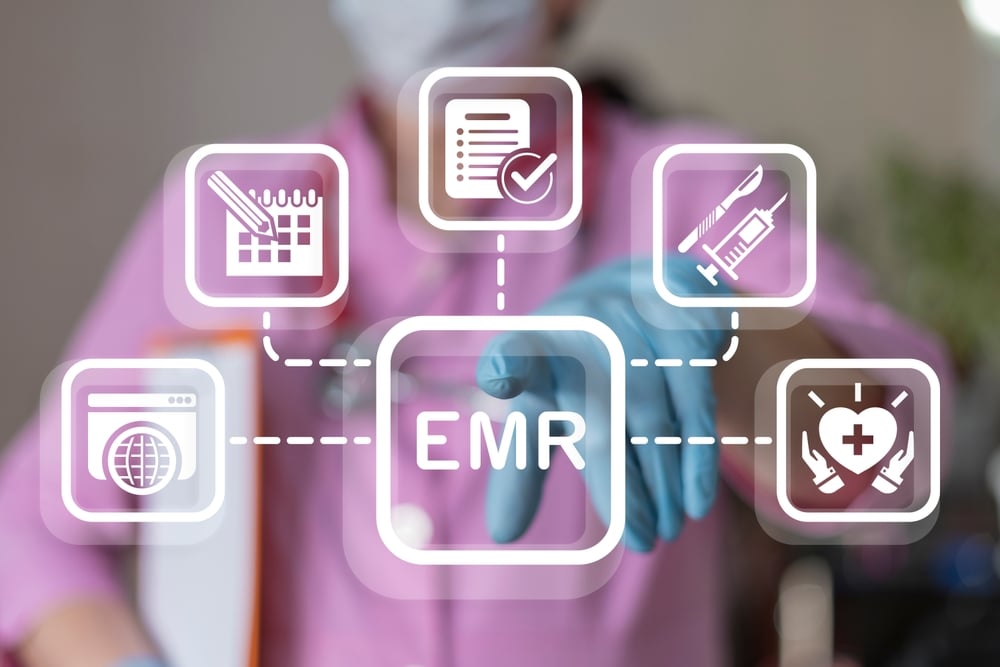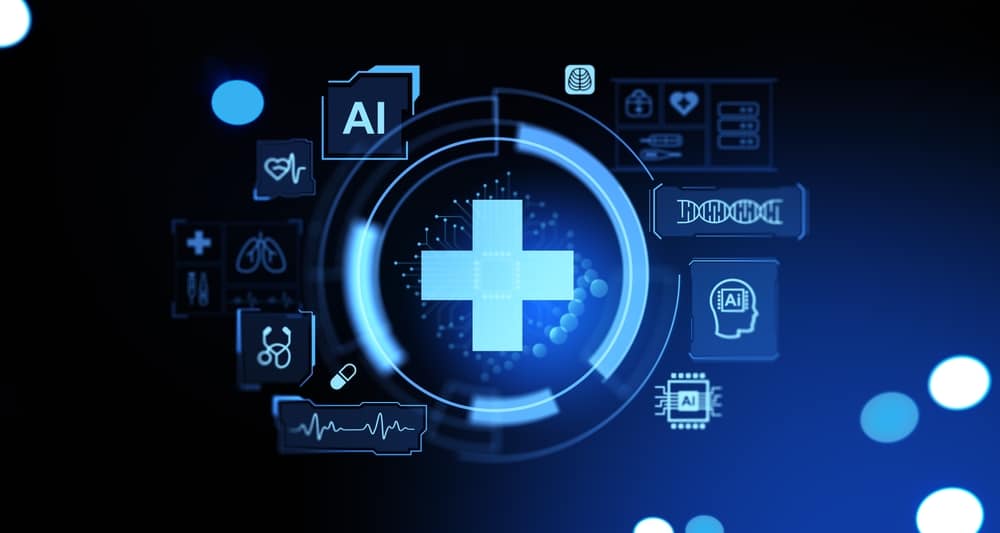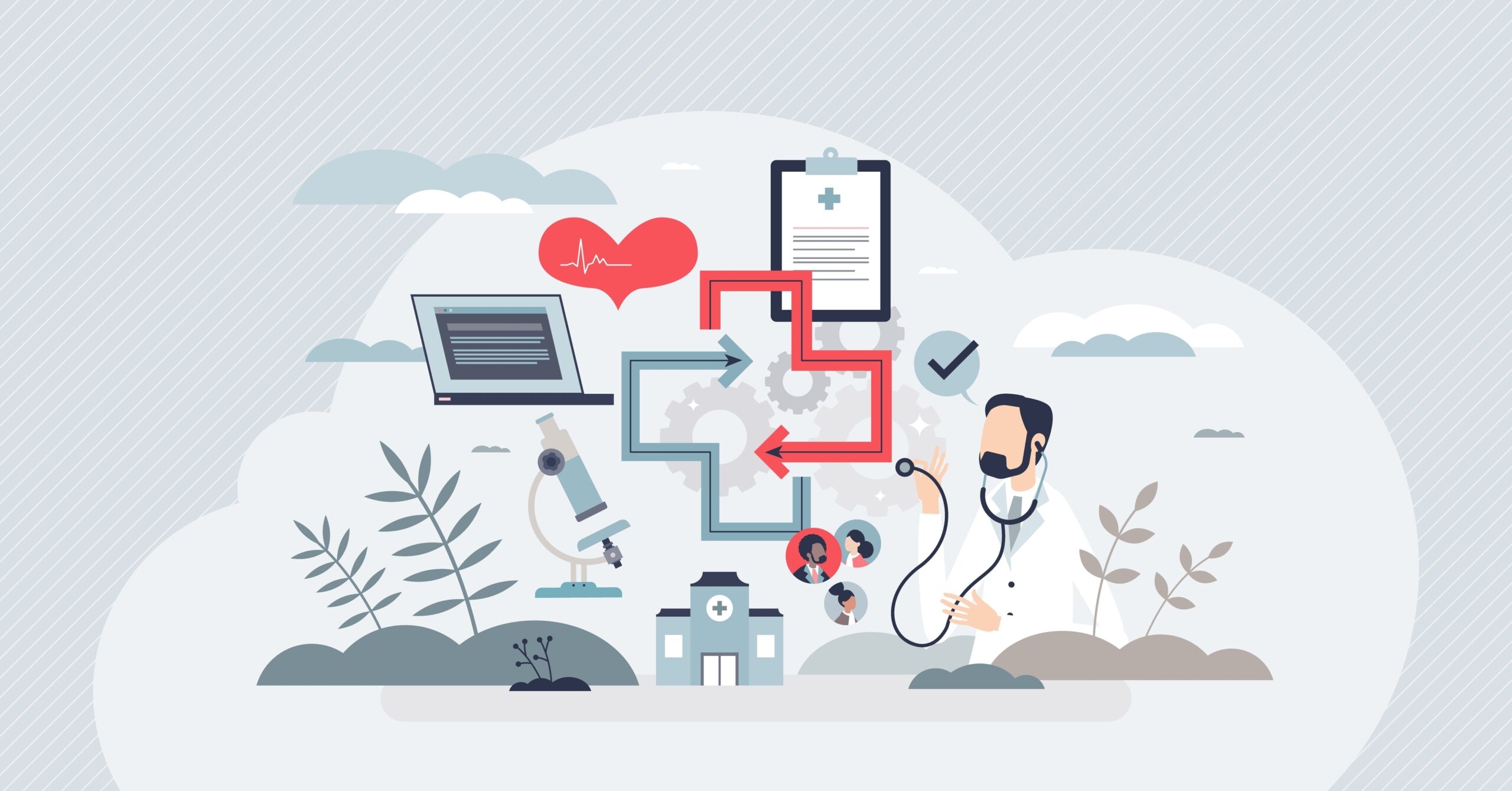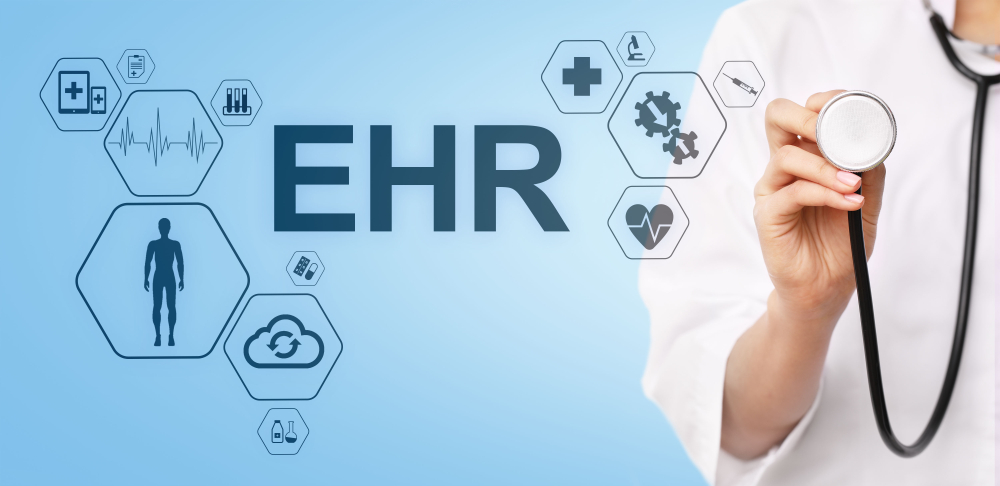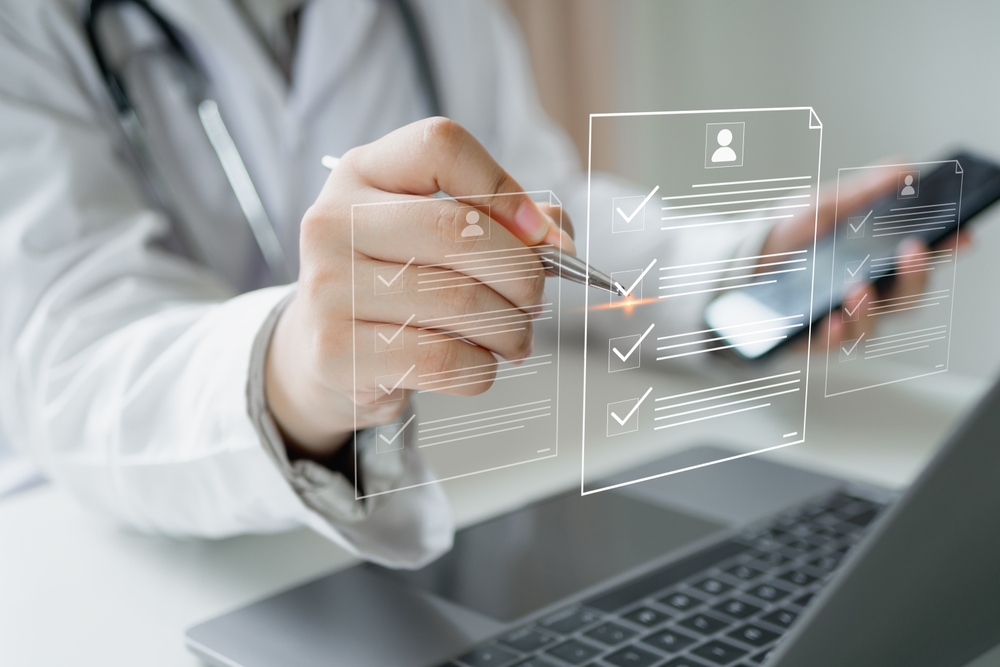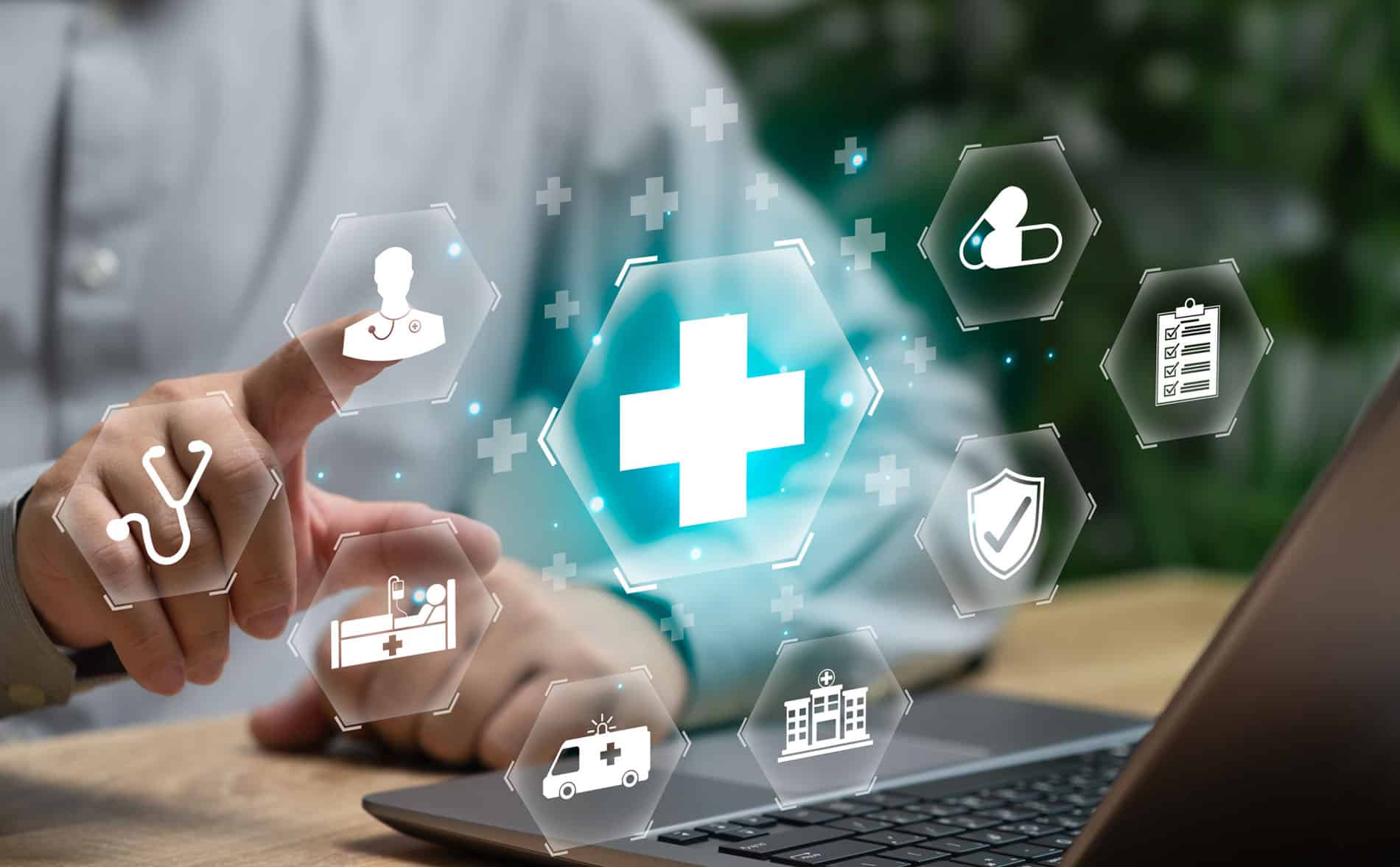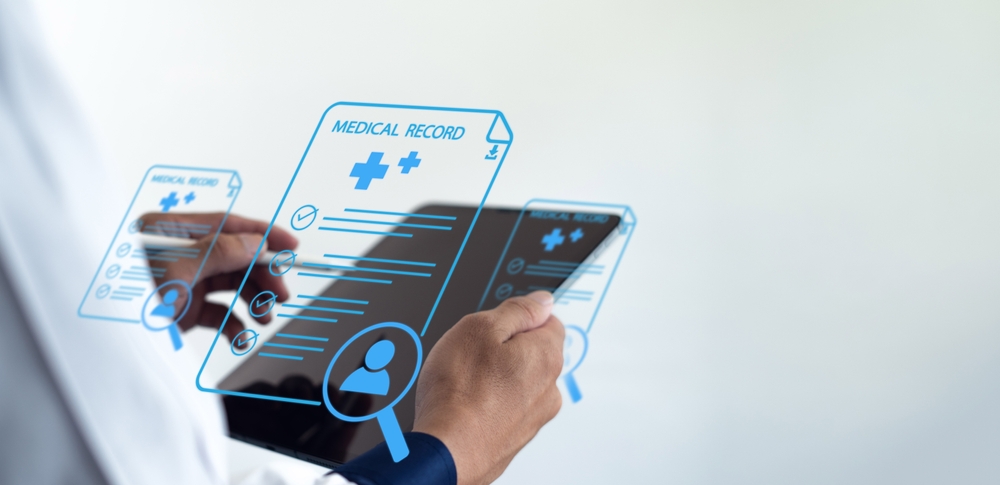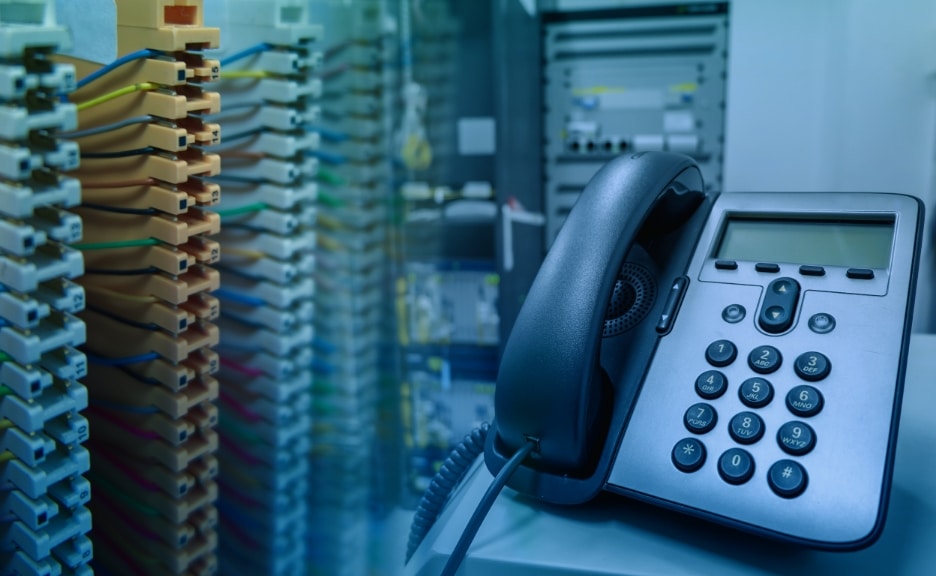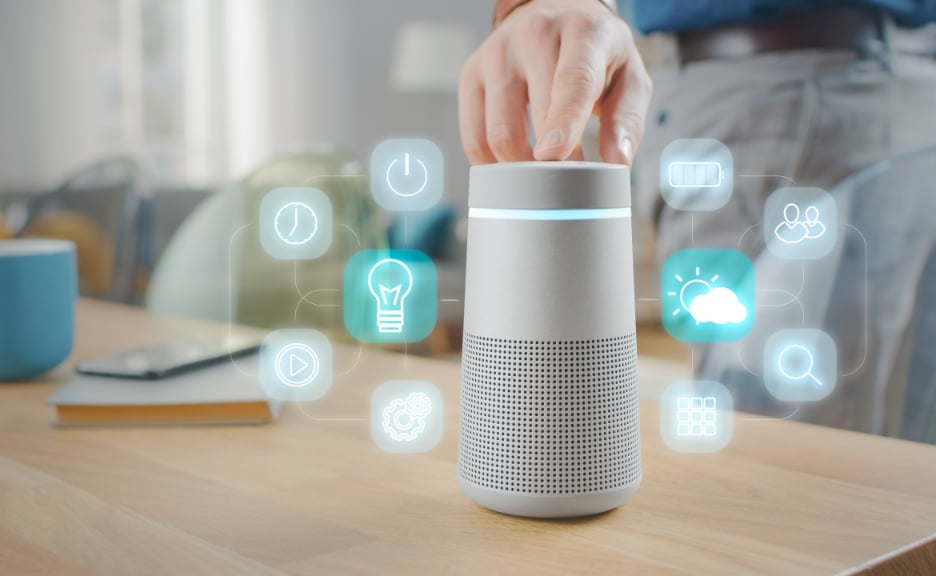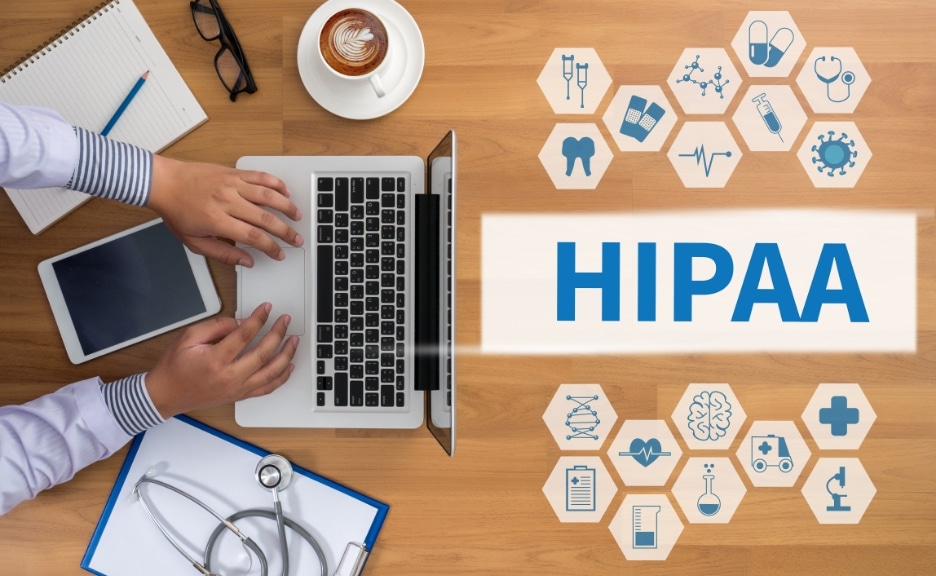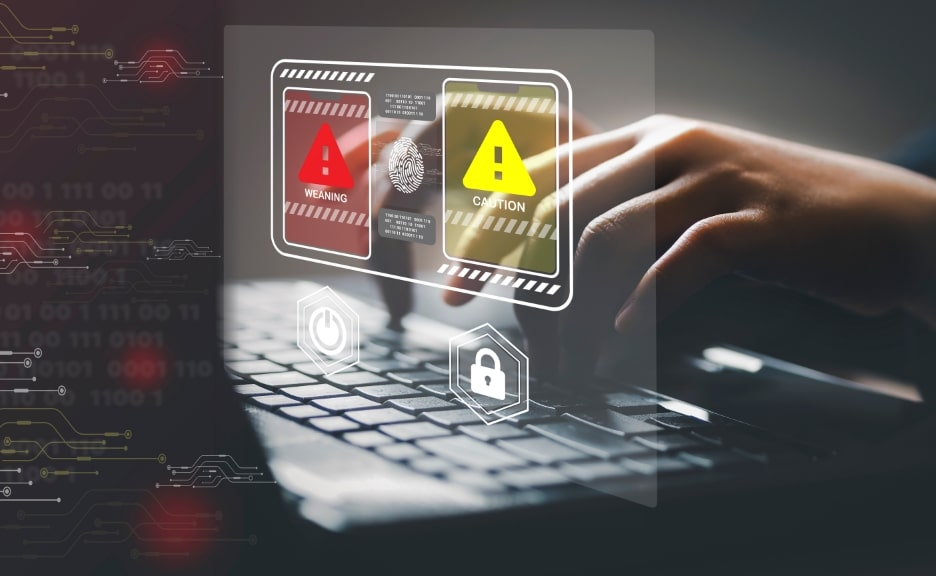Healthcare & Interoperability
EHR Interoperability in Healthcare: Achieving Seamless Data Exchange

When your healthcare organization can exchange data seamlessly with other providers, quality of care improves, and provider burdens lessen. So, why are just 43% of hospitals routinely engaging in interoperable data exchange right now?
Electronic health record (EHR) interoperability has stalled — not due to a lack of standards, but because organizations still rely on fragmented, outdated systems. Cloud-based EHR interoperability solutions, like those from Consensus Cloud Solutions, are removing the roadblocks and paving the way for secure, seamless data exchange that finally delivers on interoperability’s promise.
Let’s answer common questions about EHR interoperability standards, examine the challenges of adopting them, and explore how cloud-based solutions can help your organization break through the barriers.
What Benefits of EHR Interoperability Await Organizations That Get it Right?
To shape their strategies, C-suite leaders industry-wide are shifting their conversations away from the basics of what EHR interoperability is and toward setting KPIs based on real-world benefits of EHR interoperability that other organizations have achieved, including:
- Lowers administrative costs. Administrative burdens consume up to 30% of the nation’s total healthcare spend. By reducing manual tasks like re-keying information from faxes, interoperability eliminates busy work and reduces the risk of billing or claims processing errors.
- Improves data accuracy. Duplicate or incomplete data can lead to misdiagnoses and medication errors. Conversely, multiple studies show that EHR interoperability leads to greater medication safety and reduces the risk of serious patient safety events.
- Accelerates care coordination. Rapid sharing of EHR data creates smooth transition-of-care handoffs, such as patients moving from hospitals to skilled nursing facilities (SNFs).
- Enhances regulatory compliance. Interoperability promotes compliant sharing of PHI, reducing the risk of HIPAA violations and costly fines.
- Creates more engaged patients. Information sharing between patient portals, mobile health apps, and wearables helps patients stay healthy and improve chronic condition management.
Building Blocks for Next-Level EHR Interoperability
Achieving higher levels of EHR interoperability starts by establishing a strong foundation built on universally accepted standards that enable the secure and consistent exchange of data across systems. Any solution you add to your organization’s tech stack should comply with at least one of these four protocols.
- HL7 (Health Level Seven International): HL7 is a foundational data sharing framework, allowing real-time communications between hospitals, skilled nursing facilities (SNF), laboratories, and disparate EHRs.
- FHIR (Fast Healthcare Interoperability Resources): Developed by HL7, FHIR creates a modern, web-based framework for exchanging healthcare data, using application programming interfaces (APIs) to integrate seamlessly with providers, networks, EHRs, and health information exchanges (HIEs).
- CCD (Continuity of Care Document): Typically used for care transitions, a CCD provides essential patient demographics — medications, allergies, immunization records, medical history — in a standard Consolidated Clinical Document Architecture (C-CDA) format.
- X12: The ANSI X12N/EDI standard ensures healthcare organizations comply with administrative requirements regarding the electronic submission and processing of insurance claims, eligibility verifications, and payments.
Using these protocols as your guide, your organization can future-proof its systems and ensure smooth, accurate information exchange across every point of care.
The EHR Interoperability Barriers That Hold Many Healthcare Organizations Back
Multiple technical and regulatory hurdles stand in the way of full interoperability, which is why interoperability remained flat among U.S. hospitals from 2022 to 2023. Outdated legacy systems incapable of integrating with newer technologies represent the biggest barriers to adopting consistent information-sharing standards. When systems cannot talk to one another in a common language, these additional challenges result:
Lack of Standardization
EHRs vary among healthcare organizations. When one EHR uses a different data format, coding system, or communications protocol than another, information gaps occur, creating unexpected and dangerous consequences. For example, if an urgent care center receives a medical history from a patient’s external provider in a non-universal format, staff may have to re-key the information. If a typo or oversight mistakenly occurs in that patient’s medication allergy list, it could trigger a serious safety event.
Complex Integration Costs
Trying to maintain, update, and integrate legacy systems chews up enormous IT staff time and financial resources. Larger health systems without appropriate in-house staff must grapple with costly vendor fees to remain compliant. Smaller practices and rural healthcare facilities must pick and choose updates and integrations based on their budgetary constraints, inhibiting their ability to achieve true interoperability.
Security and Privacy Risks
Healthcare organizations continue to be prime targets for cyberattacks, including data breaches and ransomware events. Sharing protected health information (PHI) across multiple systems without proper security controls raises the risk of breaches because it causes staff to rely on unsecured, manual workarounds that lack encryption, permissions management, and audit trails. Organizations must insist on solutions that use data encryption to protect sensitive patient data. Another must-have: tight access controls that can ensure only clinicians and others with specific permissions can access PHI when it’s at rest or in transit.
Reluctance to Share Data
While the 21st Century Cures Act prohibits information blocking, the rules are complex, and exceptions exist, causing some vendors or organizations to inadvertently inhibit access to information. When information is blocked, providers lack access to a patient’s complete medical record, so they may order duplicate tests without knowing it or make a wrong diagnosis based on a key piece of missing medical information. Patients, too, feel the effects of information blocking. For example, if a provider’s system doesn’t share data freely, patients may have to repeat unnecessary tests or fill out the same paperwork multiple times.
Gaps in Patient Identifiers
Matching patient records across systems is challenging without a universal patient identifier. A patient with different last names, whether due to marriage or other reasons, may have two separate medical records. The same is true if patient names are accidentally misspelled because they have to be re-keyed into an organization’s EHR. These inaccuracies slow down workflows, increase administrative burdens for staff, and can lead to billing snafus, claims denials, and medication errors.
Five Essential Steps to Achieve True Interoperability (and EHR Interoperability Solutions to Help You Get There)
Overcoming the challenges of EHR interoperability and achieving higher levels of data sharing requires a proven strategy coupled with leading-edge technology. Shape a winning strategy around these five tenets, and discover how EHR interoperability solutions from Consensus Cloud Solutions can support your team at each step of their journey.
Adopt Compatible Standards
Interoperability begins by choosing tools that speak the same language. Consensus solutions support compatible standards by converting paper files and faxes into formats that can be easily shared.
eFax Corporate® helps organizations leverage their legacy systems and move from simple digital documents to advanced healthcare standards for HL7 and FHIR secure data transport. With eFax Corporate, you can convert paper-based medical records into electronic documents. What’s more, eFax Corporate can integrate with your existing electronic medical record (EMR) or EHR system through a simple, secure cloud fax API.
Clarity CD™ uses artificial intelligence (AI), machine learning (ML), and natural language processing (NLP) to extract unstructured data from faxes and images and then turn them into structured C-CDA files that integrate directly into your EHR. Here’s how the process works:
Establish Clear Governance
The next step in your interoperability journey is to procure solutions that allow you to access, share, and secure data so you can remain compliant with HIPAA and the 21st Century Cures Act.
eFax Corporate encrypts data to prevent unauthorized PHI access and reduce legal risks. A user control panel inside eFax Corporate lets you assign tiered levels of administrative access from one central location. You can add or remove users across the entire organization, automate onboarding and offboarding, and maintain a full audit trail. Features like these support standardized policy enforcement while keeping PHI protected.
Implement Scalable Infrastructure
Rigid point-to-point connections will not create true EHR operability. Instead, your organization needs systems designed for easy integration to avoid the high cost and complexity of manual connections.
The eFax Unite™ platform centralizes multiple communication channels — fax, Direct Secure Messaging, Care Quality/Trusted Exchange Framework and Custom Agreement (TEFCA) — without requiring point-to-point connections. You can send patient data effortlessly through CareQuality, including connections with CommonWell Health Alliance, accountable care organizations, HIEs, and other data exchange networks.
Organizations using athenahealth’s EHR will benefit from the eFax integration with athenaOne®, which matches faxed patient information with the right patient record, so providers have the information they need at the point of care. Here’s how it works:
Train Staff and Stakeholders
Your interoperability strategy is only as strong as the people who use your systems every day. Clinicians and staff need intuitive, efficient workflows so they can exchange information with referring providers and post-acute care centers easily. Consensus solutions fit naturally into how teams work, improving productivity and reducing the disruption of having to learn new tools.
With eFax Corporate, staff can send, receive, and route faxes using email-like tools. In addition, you can configure eFax Corporate to send with specific routing customized to your organization’s workflow. Features like this help staff get back about 70% of their time for patient care.
Clarity CD removes repetitive manual entry by using AI to extract and structure data. And eFax Unite centralizes communications, saving staff from having to learn and use multiple different tools.
Monitor and Measure Outcomes
By tracking and measuring your KPIs, you can push your organization toward higher levels of EHR interoperability. To make this happen, you need visibility into how information moves, who it reaches, and how it influences patient care. Consensus solutions offer multiple built-in tools to help you measure your KPIs and improve performance over time.
eFax Corporate includes detailed reporting features that let teams track fax volume by department or user, helping identify bottlenecks and reduce time spent on administrative tasks.
eFax Unite provides a full audit trail and a complete view of data exchange across networks so you can monitor and improve timeliness, delivery status, and compliance.
Achieve Seamless Data Exchange With the Right EHR Interoperability Solutions
EHR interoperability is not just nice to have. It’s now federally regulated and enforced through hefty civil monetary penalties (reaching up to $1 million per violation for information blocking) with the TEFCA final rule that went into effect on January 15, 2025. Uplevel your interoperability capabilities by evaluating cloud-based solutions that can help your organization share information, improve care quality, and reduce costs through seamless data exchange. Ready to begin? Request a demo of Consensus Cloud Solutions’ products today.
Frequently Asked Questions
Seek solutions that support widely accepted protocols like HL7, FHIR, and CCD to ensure compatibility across symptoms. Easy, API-led integration and data encryption are other must-haves. Products like eFax Corporate, Clarity CD, and eFax Unite combine these features to help healthcare organizations reduce manual work and reach new levels of EHR interoperability.
EHR interoperability streamlines data exchange, reducing manual data entry and eliminating paper-based processes. Tools like eFax Corporate can reduce administrative burdens by 70% by digitizing faxes and integrating them directly into EHR workflows.
Interoperable systems support better care coordination, especially regarding handoffs from hospitals to post-acute care providers or from emergency departments to primary care providers. Solutions like eFax Unite allow providers to exchange patient information through national networks like Carequality and CommonWell Health Alliance without requiring custom point-to-point integrations.





